
Carex abrupta is a species of sedge known by the common name abrupt-beaked sedge or abruptbeak sedge. It is native to the western United States from California to Idaho, where it grows in moist mountain habitat such as meadows.
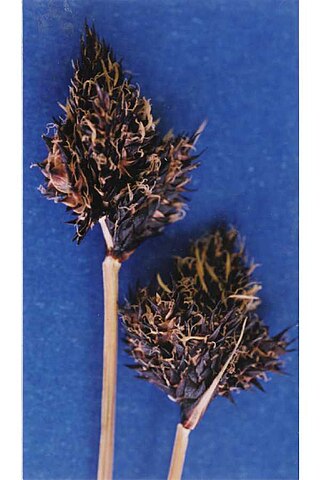
Carex albonigra is a species of sedge known by the common name black and white sedge. It is native to western North America from Alaska and most of western Canada to California to New Mexico, where it grows in mainly dry, rocky high mountain habitat such as talus. This sedge forms a dense clump 10 to 30 centimeters in height with narrow gray-green leaves. The inflorescence is a headlike cluster of overlapping spikes. The fruit is coated in a sac called a perigynium which is dark purple to chestnut brown and often tipped with white.

Carex angustata is a species of sedge known by the common name widefruit sedge. It is native to the western United States from Washington and Idaho to California, where it grows in wet meadows and on streambanks.

Carex hassei is a species of sedge known by the common name salt sedge. It is native to western North America from British Columbia to Baja California to New Mexico, where it grows in moist places, such as meadows.
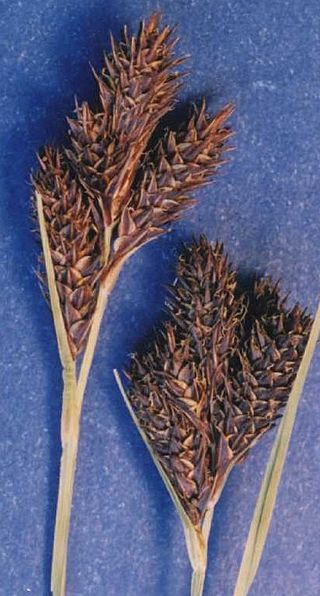
Carex helleri is a species of sedge known by the common name Heller's sedge. It is native to eastern California and western Nevada, where it grows on rocky mountain slopes and in other habitats.

Carex hoodii is a species of sedge known by the common name Hood's sedge. It is native to western North America from Alaska to Nunavut to California to South Dakota, where it grows in dry to moist habitat in forests and on mountain slopes.
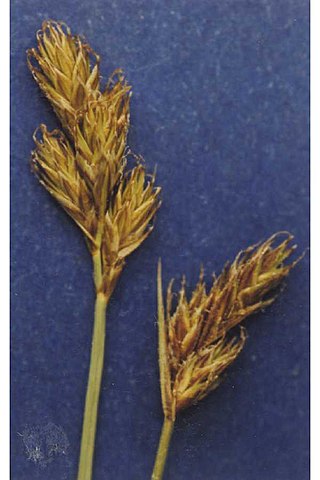
Carex leporinella is a species of sedge known by the common name Sierra hare sedge.
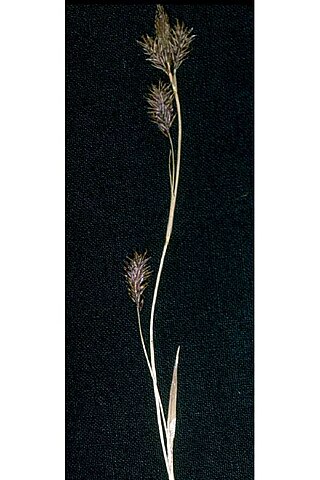
Carex luzulina is a species of sedge known by the common name woodrush sedge.

Carex lyngbyei is a species of sedge known by the common name Lyngbye's sedge. It is native to the west coast of North America from Alaska to California, where it "is the common sedge of the Pacific coastal salt marshes." It is also known from Greenland and Iceland. It prefers to grow in silty sediment rather than sand and in habitat with brackish water, such as salt marshes. This sedge produces stems 25 centimeters to well over one meter tall from a network of long rhizomes. The leaves have reddish brown sheaths which do not have spots. The inflorescence produces stiff, nodding spikes on peduncles. The fruit is coated in a leathery yellowish brown sac called a perigynium. This is a pioneer species, one of the first plants to colonize the mud of tidal flats in its range.

Carex nebrascensis is a species of sedge known as Nebraska sedge.
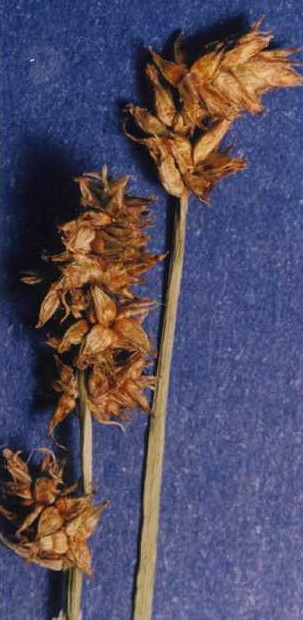
Carex nervina is a species of sedge known by the common name Sierra sedge.

Carex pellita is a species of sedge known by the common name woolly sedge.
Carex petasata is a species of sedge known by the common name Liddon sedge.

Carex phaeocephala is a species of sedge known by the common name dunhead sedge.
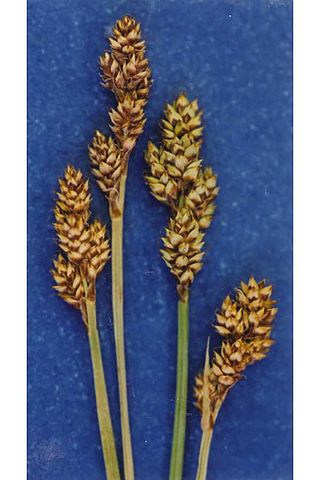
Carex praeceptorum is a species of sedge known by the common names early sedge and teacher's sedge.

Carex proposita is a species of sedge known by the common name Great Smoky Mountain sedge. It has a scattered distribution in parts of the western United States, including Washington, Idaho, and California. It was named for the Smoky Mountains of Idaho, not the Great Smoky Mountains, where it does not occur. This sedge produces low, dense clumps of stems under 35 centimeters tall. The inflorescence is a dense or open bundle of rounded or oval brown flower spikes. The fruit is coated in a veined perigynium with a white tip.
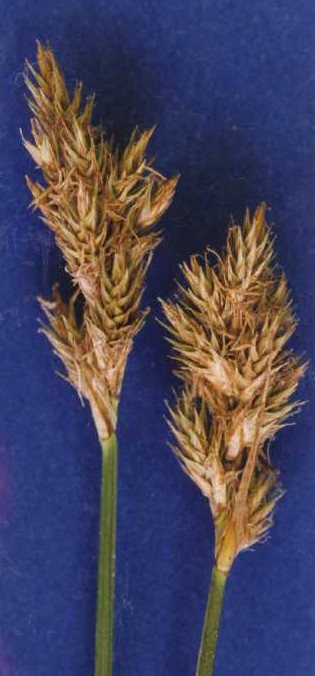
Carex specifica is a species of sedge known by the common name narrowfruit sedge.

Carex vallicola is a species of sedge known by the common name valley sedge. It is native to western North America from British Columbia to New Mexico, where it grows in many types of moist and dry habitat, including forest and grassland. This sedge produces clumps of stems up to about 60 centimeters tall. The inflorescence is a crowded cluster of a few flower spikes. The fruit is enclosed in a brown perigynium.
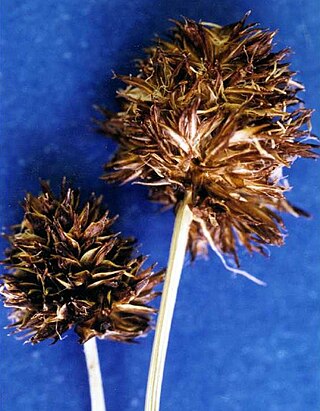
Carex vernacula is a species of sedge known by the common name native sedge.
Carex lemmonii, or Lemmon's sedge, is a plant in the sedge family, and is endemic to California. Carex albida is now considered a synonym, but was previously thought to be a separate species; such plants have the common name white sedge.


















